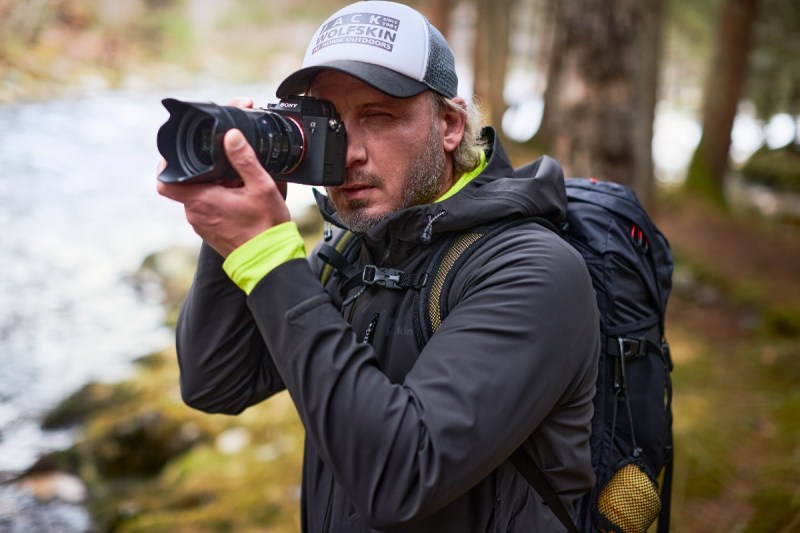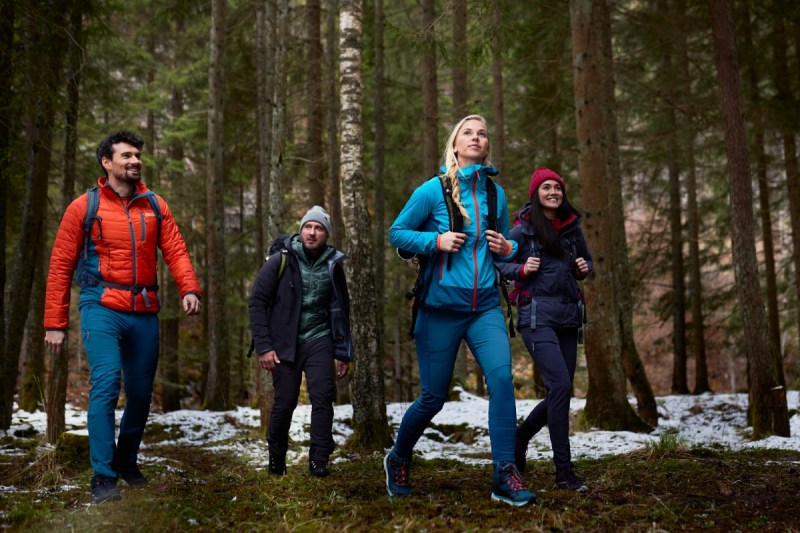Like its American peers The North Face and Patagonia, the German outerwear maker Jack Wolfskin originated as an entrepreneurial response to a lack of gear available in the 1970s. Founder Ulrich Dausien began selling tents, jackets, and sleeping bags, after earning about $6,000 in profits from selling Palestinian keffiyeh scarves on Frankfurt’s Eisernen Steg footbridge (per HighsNobiety).
Five decades on and that innovative spirit still lives on with its sustainable, high-quality products that are much more common on the other side of the pond. This year, that creativity and dedication to conserving the outdoors are expressed in the Tapeless Jacket, now available in select stores and on Wolfskin’s website. Looking for a waterproof jacket? The Tapeless Jacket eliminates 60 feet of seam-sealing tape, introducing Zero Tape Technology, a more breathable alternative to seam tape that won’t leak or fail while hiking or commuting.

At its core, the Tapeless Jacket is a breathable, comfortable shell created with hikes and adventures that demand high-quality technical apparel in mind. With comfort and performance always at the forefront of its design, Jack Wolfskin integrated its proprietary Texapore Core Fuse Stretch Ripstop into the new jacket. This triple-layer fabric offers superior weather protection and comfort, according to Wolfskin. The fabric, however, doesn’t result in a bulky coat. Europe’s leading technical and sustainable outerwear manufacturer is dedicated to a sleek fit, which is also expressed in waterproof zippers, an adjustable hood, hem and cuff adjustments, and a chest pocket. The Tapeless Jacket’s distinct cut also features no shoulder or hip seams, which helps to eliminate irritating areas when worn with a backpack.
This is a far cry from when Jack Wolfskin was founded, a time when outdoor activities were still pretty niche affairs, and there was no mighty outdoors industry offering a suite of goods to thrive in the great outdoors. Still, even then Dausien envisioned a massive market who would embrace playing outside.
“We offer inexpensive equipment for the backpacker as well as expedition equipment for the Himalayan expert,” he wrote in a 1979 advertisement.

Today the company leads sustainable efforts like rewilding Canada’s Yukon wolves (Jack Wolkskin is, after all, named after the wolf and Jack London, one of the pack’s greatest chroniclers.) The outdoors manufacturer’s sustainability goals are at the forefront of its outdoors mission, developing green and Earth-friendly materials — products made of organic and recycled materials. As to what the firm doesn’t use, there is a companywide ban on PFCs, and Wolfskin rejects using fur and Angora wool in its products. It sources down, leather, and Merino wool from ethical suppliers and looks to wield a significant influence over its supply chain.
“For us, ‘living to discover’ not only means enjoying the natural world, but doing everything in our power to preserve and protect it,” states the Jack Wolfskin website.
The Tapeless Jacket is available in two colors with a medium piece weighing in at 13.5 ounces. Purchase one of your own for $480.



